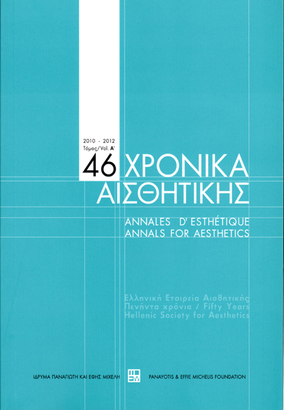Σκέψεις γύρω από την εφεύρεση της ερυθρόμορφης τέχνης
Part of : Χρονικά αισθητικής : ετήσιον δελτίον της Ελληνικής Εταιρείας Αισθητικής ; Vol.43, 2005, pages 131-143
Issue:
Pages:
131-143
Parallel Title:
Thoughts on the invention of the red-figure technique
Section Title:
Β' ΜΕΡΟΣ/PART II
Author:
Abstract:
Various theories have been advanced concerning the origins of the red- figure technique which is believed to have been invented in Athens around 530-520 BC. According to one school of thought, red-figure ware emerged under the influence of other media, such as metalwork, painting, or bas-relief sculpture, which also employed a light-on-dark scheme. It seems more likely, though, that it arose out of the black-figure tradition, as attested by the use of black-figure ornaments, added colours, and incision on early red-figure vases. The invention has been attributed to a number of potters and vase-painters, but the Andokides Painter is considered to be the most likely candidate. However, due to the lack of evidence, it is impossible to name the inventor. Red-figure seems to have been the result of extended experimentation that involved the discovery of new techniques, as well as the introduction of new vase shapes and new types of scene. In the beginning red-figure was used for symposium vases, for example cups and amphorae. Early production may have been intended mainly for the home-market, as several vases were dedicated on the Acropolis. Some have also been found in Etruria and a few in Greek sanctuaries and trading posts in the Mediterranean. The new technique may have appealed to members of the middle class who wanted to show off at symposia and at sanctuaries.
Subject:
Subject (LC):
Keywords:
αρχαία κεραμική, ζωγραφική
Notes:
Το παρόν άρθρο είναι βασισμένο κατά κύριο λόγο σε μεταπτυχιακή εργασία πού εκπονήθηκε υπό την εποπτεία του Dr. A. W. Johnston στο King’s College London και σε περαιτέρω ερευνά για τη διδακτορική διατριβή στο Πανεπιστήμιο της Οξφόρδης του συγγραφέα, Περιέχει βιβλιογραφία




